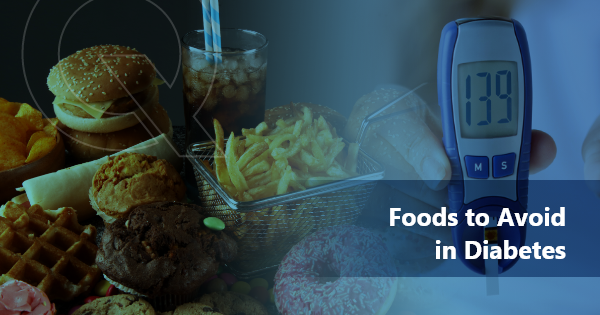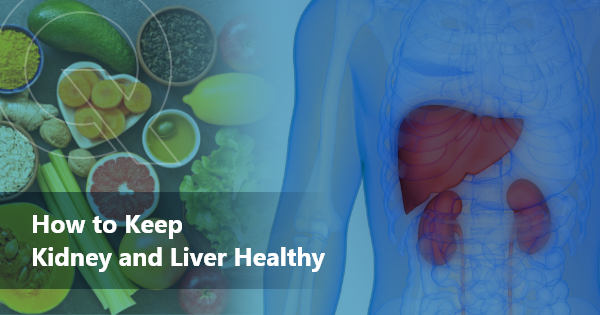Living with diabetes involves making mindful choices about what you eat. To maintain stable blood sugar levels and overall health, it’s crucial to be aware of foods that can negatively impact your condition. In this blog, we’ll discuss the foods to avoid when managing diabetes.
Contents
1. Sugary Snacks and Desserts:
High-sugar foods like candies, pastries, and sugary drinks should be limited or avoided altogether. These can cause rapid spikes in blood sugar levels.
2. Processed Carbohydrates:
Foods made from refined grains, such as white bread, white rice, and regular pasta, can lead to blood sugar spikes. Choose whole grains like whole wheat bread, brown rice, and whole wheat pasta for better control.
3. Sugary Breakfast Cereals:
Many breakfast cereals are loaded with added sugars. Opt for whole-grain, low-sugar cereals, or oatmeal with fresh fruit for a healthier morning meal.
4. Fruit Juices:
While fruit is a natural source of sugar, fruit juices often contain concentrated sugars without the beneficial fiber found in whole fruits. Limit your intake of fruit juices and enjoy fresh, whole fruits instead.
5. Fried Foods:
Deep-fried foods like french fries and fried chicken are high in unhealthy fats and can contribute to insulin resistance. Choose baked, grilled, or steamed options instead.
6. Fatty Meats:
Processed and fatty cuts of meat can be detrimental to blood sugar control. Opt for lean protein sources like skinless poultry, fish, and tofu.
7. High-Sodium Foods:
Excess salt can lead to high blood pressure, which is a concern for people with diabetes. Avoid heavily processed foods, canned soups, and salty snacks. Use herbs and spices to season your meals for flavor.
8. Alcohol:
Alcohol can affect blood sugar levels, so consume it in moderation and be aware of its impact. Always consult your healthcare provider regarding alcohol consumption and its effects on your specific condition.
9. Sugary Condiments and Sauces:
Many condiments and sauces, such as ketchup, barbecue sauce, and sweet salad dressings, can contain hidden sugars. Opt for sugar-free or low-sugar alternatives or make your own sauces using healthier ingredients.
10. Full-Fat Dairy Products:
High-fat dairy products can be high in saturated fats, which can increase the risk of heart disease. Choose low-fat or fat-free dairy options, such as skim milk, low-fat yogurt, and reduced-fat cheese.
Conclusion
Managing diabetes involves making informed food choices to maintain stable blood sugar levels and promote overall well-being. By avoiding or limiting these foods high in sugar, refined carbs, unhealthy fats, and excessive sodium, you can take control of your diet and better manage your diabetes. Always consult with a healthcare professional or registered dietitian for personalized dietary guidance.
Frequently asked Questions
Q1:What food should a diabetic avoid?
A1:iabetics should avoid sugary sweets, sugary beverages, refined carbohydrates, trans fats, high-sodium foods, excessive alcohol, sweetened breakfast cereals, and excessive portions to help manage blood sugar levels effectively.
Q2:What food should diabetics avoid?
A2:Diabetics should avoid foods high in sugar, sugary beverages, refined carbohydrates, trans fats, high-sodium foods, excessive alcohol, and large portions to help manage blood sugar levels effectively.
Q3:Is rice good for diabetes?
A3:Rice can be a part of a diabetic diet, but it’s essential to choose the right type and consume it in moderation.
1. Brown Rice: Brown rice is a better choice for diabetics compared to white rice. It contains more fiber, which slows down the absorption of carbohydrates, helping to prevent rapid spikes in blood sugar.
2. Portion Control: Pay attention to portion sizes. Smaller portions of rice can help manage blood sugar levels more effectively.
3. Whole Grains: In addition to brown rice, consider incorporating other whole grains like quinoa, barley, and bulgur into your diet. These grains have a lower glycemic index and can be more suitable for diabetes management.
4. Balanced Meals: Pair rice with lean protein sources, vegetables, and healthy fats to create a balanced meal. This can further help stabilize blood sugar levels.
5. Monitor Blood Sugar: It’s essential for diabetics to monitor their blood sugar levels after consuming rice to understand how it affects their individual response. This can help adjust portion sizes accordingly.
Remember that individual responses to foods can vary, so it’s crucial to work with a healthcare provider or registered dietitian to create a personalized meal plan that suits your specific dietary needs and helps manage your diabetes effectively.





